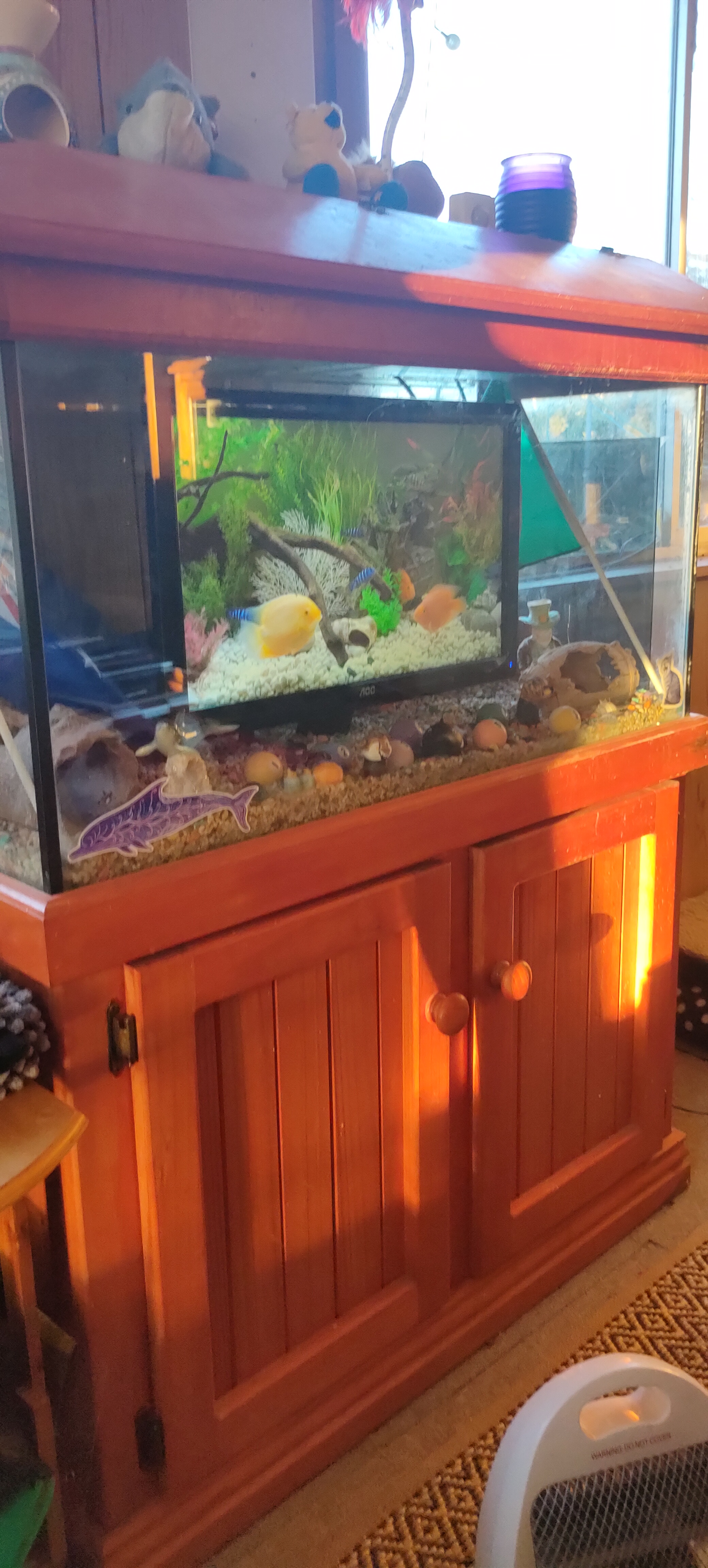Yeah, using a 9 year old work laptop as my home server. Then with the surging energy prices last year I decided to switch out that laptop with a raspberry pi 4 as server.
Conclusion: I now have a laptop and a RPI running 24/7 🤦♂️
Conclusion: I now have a laptop and a RPI running 24/7 🤦♂️
Sounds like a win to me. lol
My RPi4s and 3s will out perform my older laptops, apart from the just retired P50 (gpu nearly died). That one is 6y, the others are 11y old HPs and a 16y 32 bit Xxodd (wierd brand). tje RPis are sufficient for normal server use, the nwew laptop (last gen i9 with 64G mem) can host (nested) kvm clients, so no need for extra hardware. (And still I save them, just in case ;) )
I wouldn’t recommend a RPi for a server for anyone looking into this. Something like a ThinkCentre M92P will cost less and run circles around a RPi4, at not much more power. It will also support x86 and has Quick Sync tech which makes is great if you use something like jellyfin and need to do transcoding.
Even if you really need a low power SBC then a RPi4 was never the best option. The RockPro64 was released an entire year prior to the RPi4, and has a faster CPU. It supports booting from eMMC, and could boot from USB for like 2 years before the RPi figured it out. It also has a standard PCIe slot for adding SATA cards or extra ethernet ports instead of using the weird hat thing.
Personally though, I don’t think the tiny/mini/micro PCs can be beat, I run two of them at home for all my services.
I’m glad I don’t need computing power then. It just runs a webserver, 2 databases, mail environment, puppet master, icr client and some random stuff I just start and forget.
It does the trick here and it and it’s predecessor Rpi3 and 2 managed, are quiet and enough for here. Both 3s boot from microsd and run from USB SSD for the OS, data is on nas. All are stock, no extentions, apart from an extra USB nic on my firewall. (Somehow having 2 different physical interfaces sounded preferable to me for a firewall)
The old 3s are now interface for my smart meter and a domoticz system.
BTW I see the Thinkcenter you mention for €250 online, My RPi4 cost me as kit €108 (8GB version). That was before all prizes went trough the roof though, as I see the separate board now for €125.
BTW I see the Thinkcenter you mention for €250 online, My RPi4 cost me as kit €108 (8GB version). That was before all prizes went trough the roof though, as I see the separate board now for €125.
A ThinkCentre M92P can be had for < €100 on eBay, like even down to €40-70. I’m not saying you shouldn’t use a RPi if you already have them, but RPi has not been worth it going back to the RPi3. If anyone needs to get hardware to setup their server, the tiny/mini/micro lines are better.
https://www.servethehome.com/introducing-project-tinyminimicro-home-lab-revolution/
I was put off of RPis since the RPi3 too, the way they misled people with their marketing about it having a gigabit port which was on a shared bus so it was not really true put me off of them. And Pine64 boards have been better going back to then with the RockPro over the RPi3, and the RockPro64 way better than the RPi4.
I turned my ten year old Toshiba i7 with a cracked LCD into a virtual fish tank after the last fish died.

ATBGE!
I salute your creativity haha
That is so awesome!
Cool. A friend had one in a fireplace that played a fire video in the evenings - with the crackling sounds too.
i disaseemble all my laptops so they are just a motherboard, screw them into sheets of MDF, place vertically, and use them as servers.
NAS, pihole, plex, etc
Do you have any photos of this?
Would love to see how this looks in practice!Up! Also would love to see how it looks
You have a tutorial? That sounds awesome.
This article talks about turning a laptop into a rack mounted computer. Each computer will be different recreating something like this based off what ports it has and where.
Do you do a headless install like Ubuntu Server Preseed?
https://help.ubuntu.com/community/Cobbler/Preseed
Or do you install linux on an SSD from a different machine, then plug it into MDF mounted laptop mobo?
I would guess by plugging external peripherals to the motherboard.
I’m talking about the LCD/monitor. Maybe @penguin_knight keeps the LCD and mounts it to the board as well. If not, it’s headless. Mouse and keyboard are not the issue. I always set up raspberry pi headless because the OS allows it. All you have to do is add an
sshfile to the/bootdir andwpa_supplicant.conffile in root dir. Other distros typically don’t, they need a monitor to be installed.I know, that’s why I wrote external peripherals and not external inputs. I don’t want to sound cocky or be an asshole (we all know how easy it is by just reading a message someone you don’t know wrote), but after 24 years of being in system administration/engineering/architecture I may have sufficient grasp of what I am talking about. 😅
Got it.
My problem is that the ethernetports Clip is part of the case, without it, the Ethernet cable just doesn’t stick. Do you have a solution for this problem? A photo would be really cool.
Hot Glue or if you wanna be fancy Silicone.
My laptop for home use is almost 15 years old. My desktop is almost 11 years old. My work laptop is 8 years old. Here they are talking about more modern and powerful equipment, defining them as obsolete. I don’t know, maybe we should start questioning if these consumption dynamics are a bit harmful.
based and sustainability-pilled
Old laptops can are actually great servers—hear me out:
- Built in KVM
- Low power consumption
- Battery = UPS for power blips
- SSD (sometimes)
- Wifi + Ethernet = Redundant NICs
- Quiet (sometimes)
- Small form factor
The battery is usually long gone by the time it becomes a server though.
Really old laptops have PCMCIA slots too that you can hook into newer interfaces. I used a PCMCIA eSATA card for a laptop NAS!
The battery is usually long gone by the time it becomes a server though.
Absolutely. I still have my laptop from high school, and it’s battery has been long gone. The screen is on its last legs.
Maybe it will be a server one day, but for now it’s my DnD laptop. Sucks a bit when somebody bumps the power cord and the battlemap turns off. But it’s still limping by.
I used to use my 10 year old old netbook (intel atom n270 2gb ram - ubuntu server) as a server for Plex, calibre, pihole, ssftp.
Now I am using a Raspberry Pi 4 8GB Ram, as it consumes less electricity. Old laptops are consuming (except HDDs/SSDs) 10-30 watt. Raspberry Pi in indle consumes 2watt and when i am using it at mac power with an external hdd consumes 12watt.
Yup, laptop for testing, old gaming PC for production.
Yeah until it stopped working. The heat is the problem. It lasts for like 6 months of 24/7 usage.
I’m patiently waiting for someone (anyone) I know to decide to throw out an old laptop.
Gonna bite their hand off for it, install Linux and proceed to fuck around and find out.
When you do, take a look at howtoforge.com.
Then throw on a bunch of containers from [linuxserver.io]https://www.linuxserver.io/)
Quick & easy for testing & learning.
Yes! My old framework laptop motherboard runs all my home services without issue. Just the right amount of power for my use case and it sips power.
My home server started as an HP Pavilion P6803w desktop PC. A decade later it has a better case, better power supply, more RAM, better CPU, more drives and runs Debian instead of Windows 7. The only original part is the motherboard.
My (very) old Vaio from 2013 just had a disk change with an SSD and is now a fantastic domain controller.
Absolutely and you will feel right at home over here on our self-hosting community: https://slrpnk.net/c/selfhosting
Thinkpad T430, i7 gen 1,16gb home server
One of my home servers is an X230
X230 is nice!
I’d rather take it out tho
Well mine has a KO battery and keyboard sooo
Understandable…
















